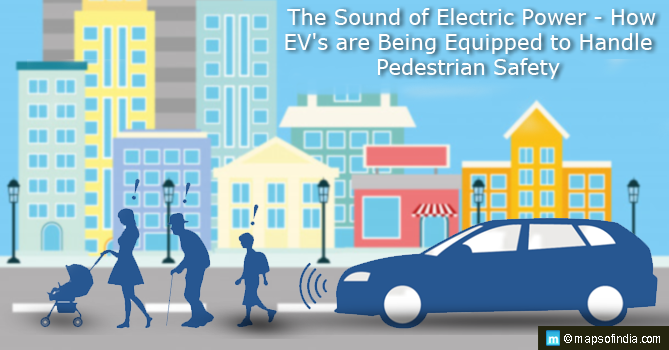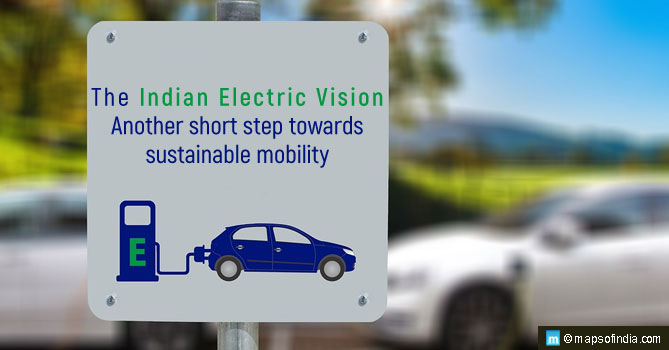

The benefits that Electric vehicles are about to bring to society and environment haven’t even begun to manifest themselves. The reduction in emissions, average global temperatures, better fuel economy and others are just the tip of a very large positive iceberg most of us fail to see.
How the lack of sound from electric vehicles affects pedestrian safety
The only major concern regarding the downsides of electric vehicles is the complete lack of discernible sound when they’re operational, since there’s no engine running any of them. Though this too has an upside in the reduction of noise pollution, it is also a global concern of safety for pedestrians, cyclists, visually impaired and others. The American National Highway Traffic Safety Administration has found that due to lack of sound, EVs are more likely to cause thirty seven percent more pedestrian and fifty seven percent more cycling accidents for absence of sound.
Pedestrians and cyclists alike are known to have difficulty regarding awareness of an approaching EV and are unable to recognize and avoid possibilities of road accidents involving them.
To address this concern, several countries where EVs are growing in numbers, have passed new laws and guidelines mandating the arrangement of some sort of consistent sound emission by EVs specific only to them when travelling at slow speeds. Instead of the outdated ICE engine sound, the EVs would be required to emit a more easily recognizable noise, very possibly like the one we’ve grown up watching in sci-fi movies.
Popular Technological approach
Using data made available by sensors along with pedestrian focused inputs, developers are exploring various auditory concepts to indicate risks of collision to pedestrians with a better relationship between them and futury mobility.
Manufacturers are working towards using external speakers to replicate engine sounds digitally, to caution pedestrians and cyclists of the oncoming or passing by vehicle. Sound settings by manufacturers include loud revs as an indication for danger and are also being looked at as an opportunity to make these sounds specific to brands keeping their identities in mind.
With most vehicles already coming equipped with future technologies like autonomous driving and collision prevention abilities, research and engineering development teams are working on exploring different kinds of approach to the emission of indicative sound in future cars. The new systems being developed are designed to take advantage of data from an array of different sensors and to enable these cars to make better calculative decisions involving pedestrian safety.
How Long ago did it all begin?
Automobile manufacturing giants have been at this task for nearly two decades, ever since the launch of the very first fully electric commercial vehicles and the first appearance of the pedestrian safety concerns. Among the first examples of such safety solutions was the VSP system employed in Nissan’s electric hatch – Leaf, which came with two distinct sounds – one of a high speed motor, for when the vehicle is accelerating, and a loud consistent beeping when it was backing up.
A lot of manufacturers have promptly followed this concept of replicating engine or motor sounds and are now moving on to – as mentioned before – creating brand specific sound sequences inspired from their existing flagship Internal combustion engine cars.
The biggest advantage that can be thought of here and is being worked towards is that pedestrians are mostly familiar with almost all sounds emitted by standard passenger or commercial vehicles running on IC engines for example, the sound of an increasing rev or exhaust note indicates the reducing distance between a vehicle and the pedestrian’s location with respect to the vehicle and can enable the pedestrian to get out of harm’s way well before an accident can take place.
Honking for safety?
One would obviously beg to know why horns have not been considered in making pedestrians aware of an approaching car to which would also come the obvious answer of the possibility of failure to do the same in case of some malfunction or sudden causes that may not give the driver time enough to do so. Horns also donot specifically indicate if pedestrians should move out of the vehicles way or stay put, allowing the vehicle to manoeuvre their way around them.
It also states the obvious that by doing so, we are really just walking quickly back towards the non-stop honking in most major vehicle-infested cities which is one of the major causes of global noise pollution.
What we can look forward to in the approaching future
Clearly, autonomous driving is the way to go eventually, and its breakthroughs like that which keep the researchers and engineers pushing the envelope towards more sustainable solutions, where one doesn’t have to worry about revisiting left behind issues for lack of better alternatives. One can be sure that the next few years of technological development can very well bring along some completely out of the box and sustainable solution to such problems, the kind of which have only begun to arise with the rapidly growing number of electric vehicles and the flood that’s about to hit the Indian market in just a few months’ time.




